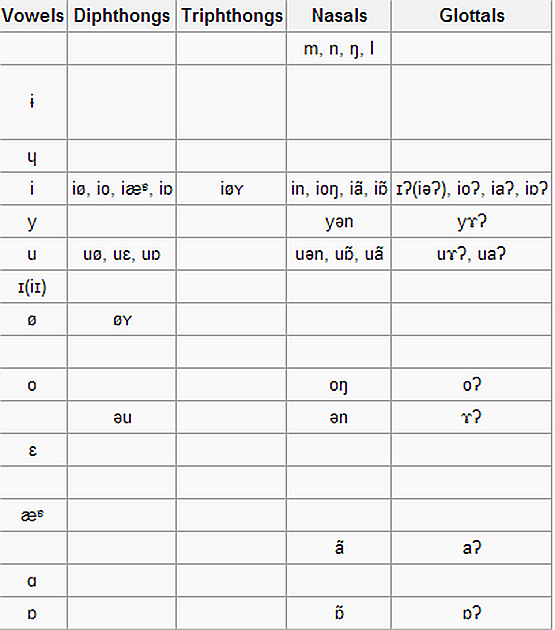1. What I've worked on
During the past few weeks of my self-tutorial project, I tried to practice my archetype at least once a day. Though my hometown dialect also belongs to the Wu sub-group (The dialect sub-group Suzhou dialect belongs to), there are some major differences that I paid attention to.
My archetype is a clip of a talk show, so I had a hard time trying to keep up with the speed of the speech. Then I decided to break the whole speech into several sentence groups to research the subtle features of the pronunciation. I also used my transcription which is fully transcribed in Suzhou phonetic symbols when I practiced and each time I marked the things that should be improved in the future.
Here are some features I focused on:
~Consonants~
Suzhou dialects pretty much turns all the voiceless consonants into voiced ones:
/s/---/z/
辰光【zen-kuaon】 (time) ,人民【zen-min】(people) ,石头【zah-deu】 (stone)
one exception to notice here: /z/ 's pronunciation varies according to the position in a word./t/---/d/
账单【tsan-te】(bill) ,账台【tsan-de】 (cashier)
~vowels~
vowels in Suzhou dialect are not affected by consonants and there are way too many vowels in Suzhou dialect than in Mandarin Chinese.
Triphthongs is a distinct characteristics and very challenging for me and I noticed some features of them:
/niyɛæ/
我在微博上转发了两条苏州绕口令。
(I posted two Suzhou dialect tongue twisters on my Chinese Twitter.)
a. Triphthongs are often pronounced longer and in 4,5, or 6th tone;
b. they are usually functioned as metric foot and are emphatic;
c. there are usually open-ended.
Velar nasal /ŋ/ also needs constant practice because unlike it is in Mandarin, Suzhou dialect places it in the word-initial position. To me, it almost functioned as a consonant.
Also, /ŋ/ in Suzhou dialect is more back than normal high, back /ŋ/ in English.
/ŋɒ/
庙外一只猫。There is a cat outside of the temple.
~tones~
Tones system is much complicated in Suzhou dialect because we have seven tones.
To practice tones, I used listening discrimination skill to break down the whole speech into small segments.
Tone sandhi phenomenon can be very tricky for me so at first my hypothesis was that Mandarin rules also applies to Suzhou dialect.
2. Related materials and resources:
Since there is no official website for Suzhou dialect, I found a BBS created by Suzhou dialect speakers which including many pronunciation tips, history and slang in Suzhou dialect. http://www.suzhouhua.org/home/
Here is another Suzhou dialect gimmick my friend suggested that I practice for tones, prominence, and intonation pattern. http://youtu.be/F9SB6wfWmi8
3. My final attempt:
~A comparison to the archetype~
I'm satisfied with the consonant and vowel clusters. I have made much progress on triphthongs and velar nasal /ŋ/ because at first I'm very worried about how to fully pronounce triphthongs. However, my tones and intonations still need polishing.
4. Final thoughts
I think breaking down the transcription is helpful to my segmental and supresegmental features practice. Also, it is always nice to turn to my Suzhou dialect speaker friend to listen to some more authentic samples which is produced in a more natural environment.
Speech in the talk show is, according to my friend, a little bit exaggerated to make his points, but I find that helpful for my intonation practice because the stress patterns and prominence are more obvious and easier to distinguish and imitate.








